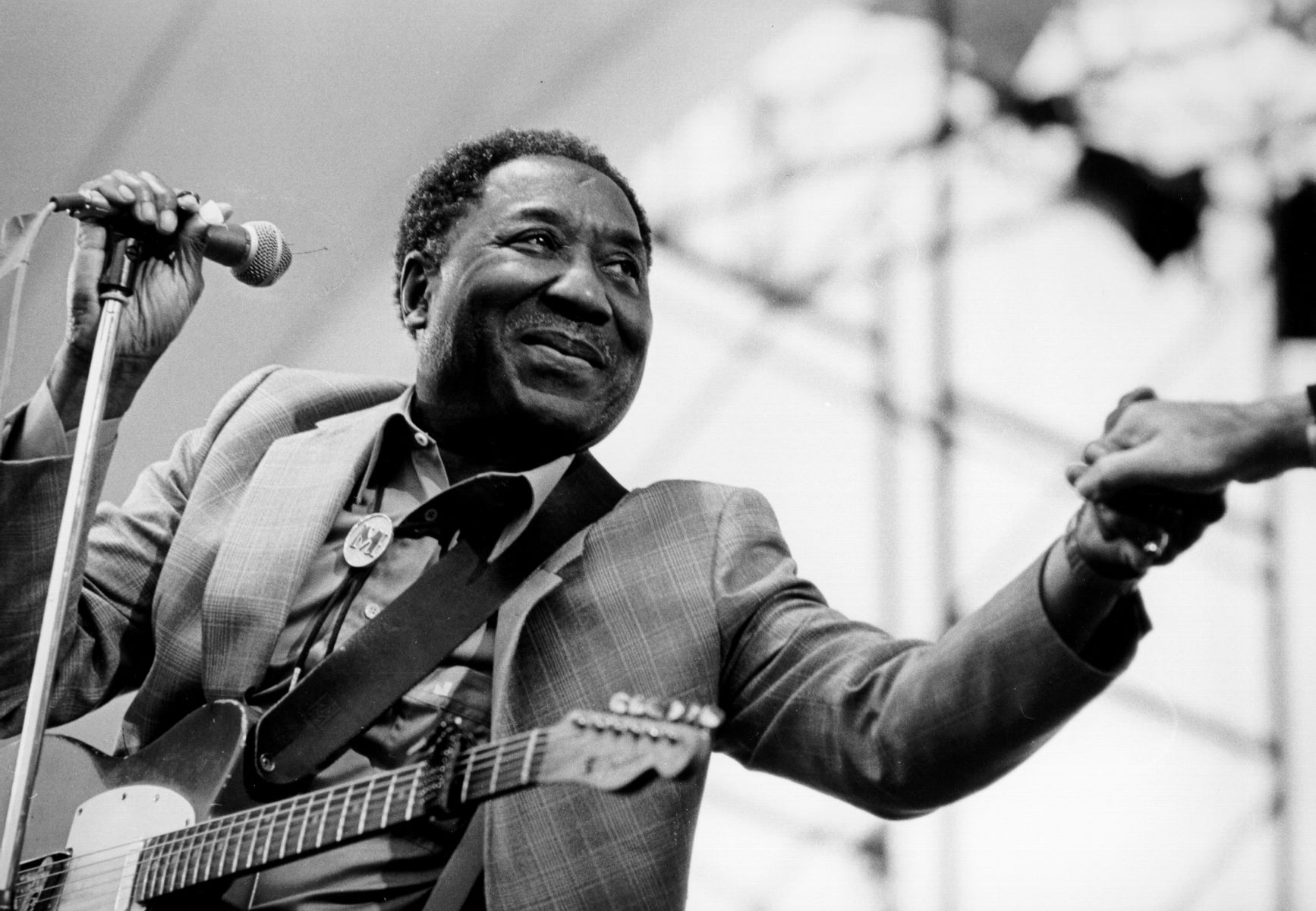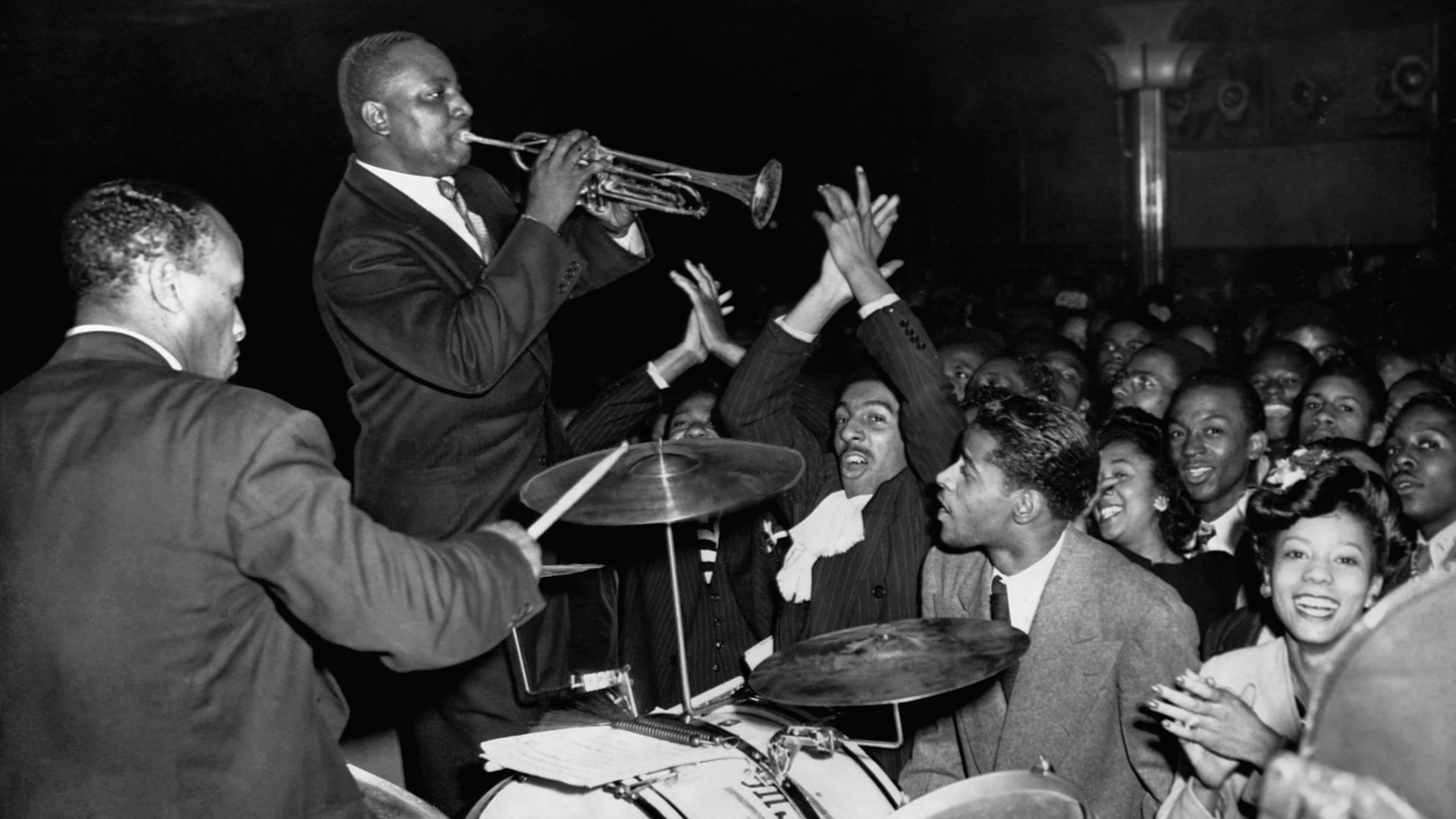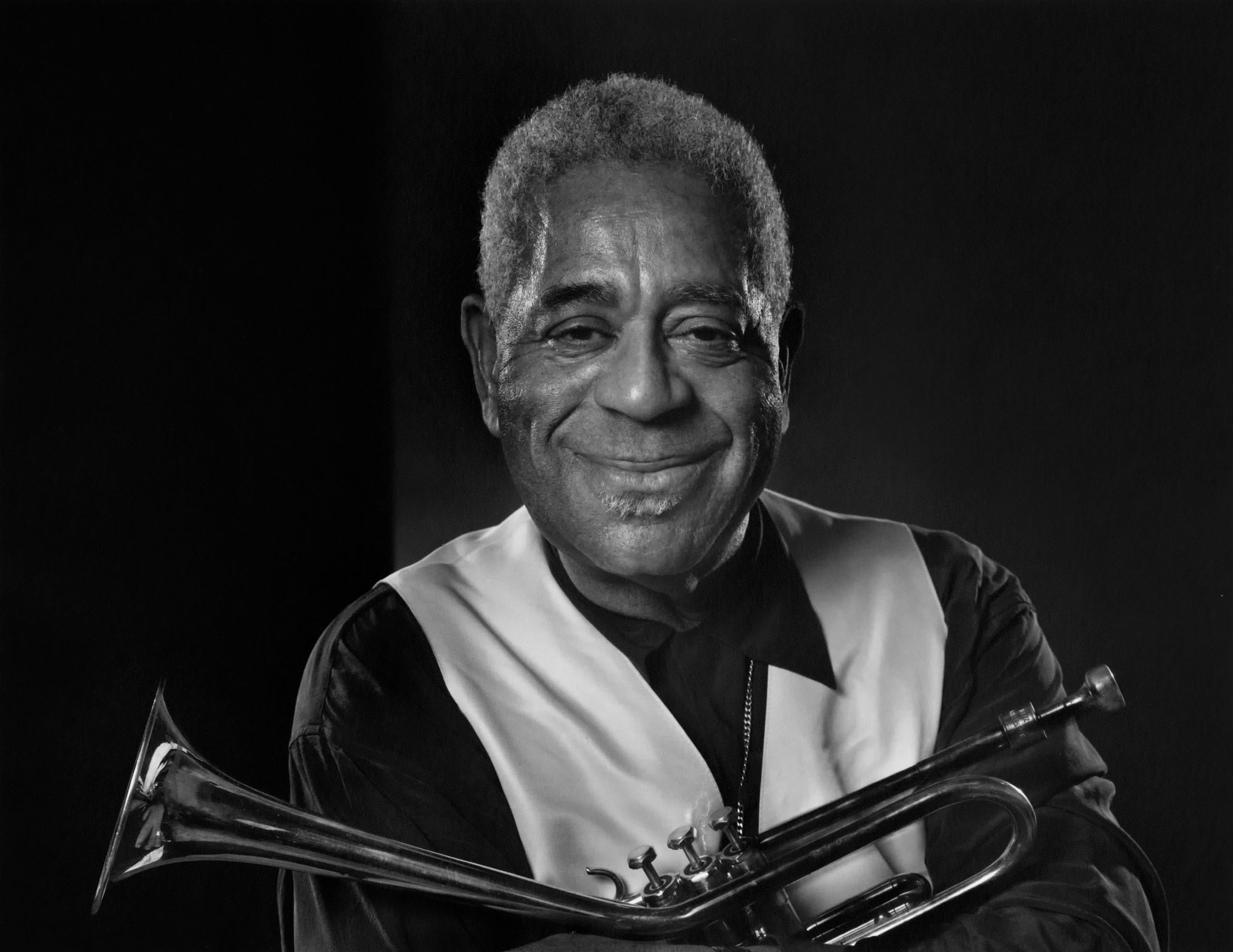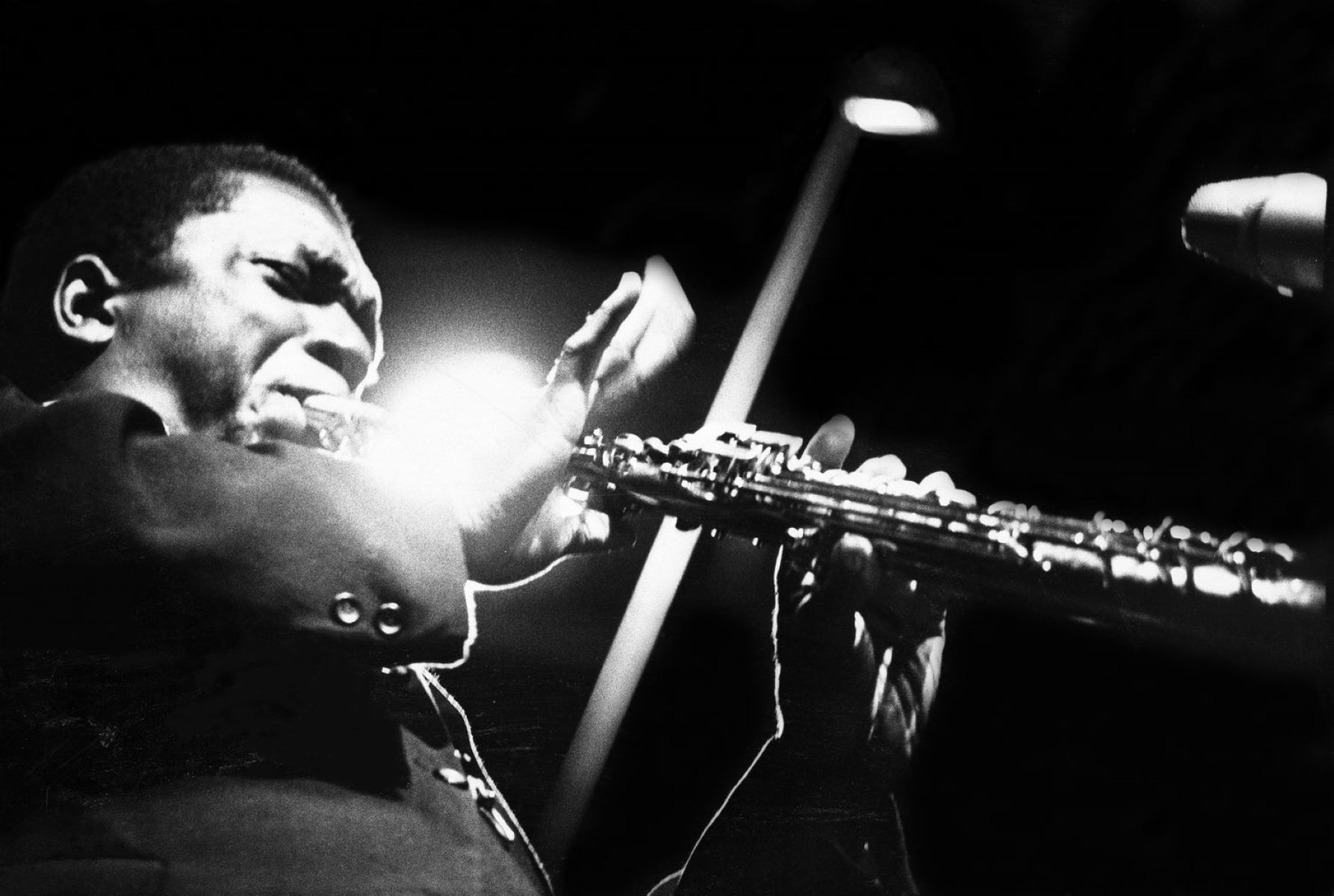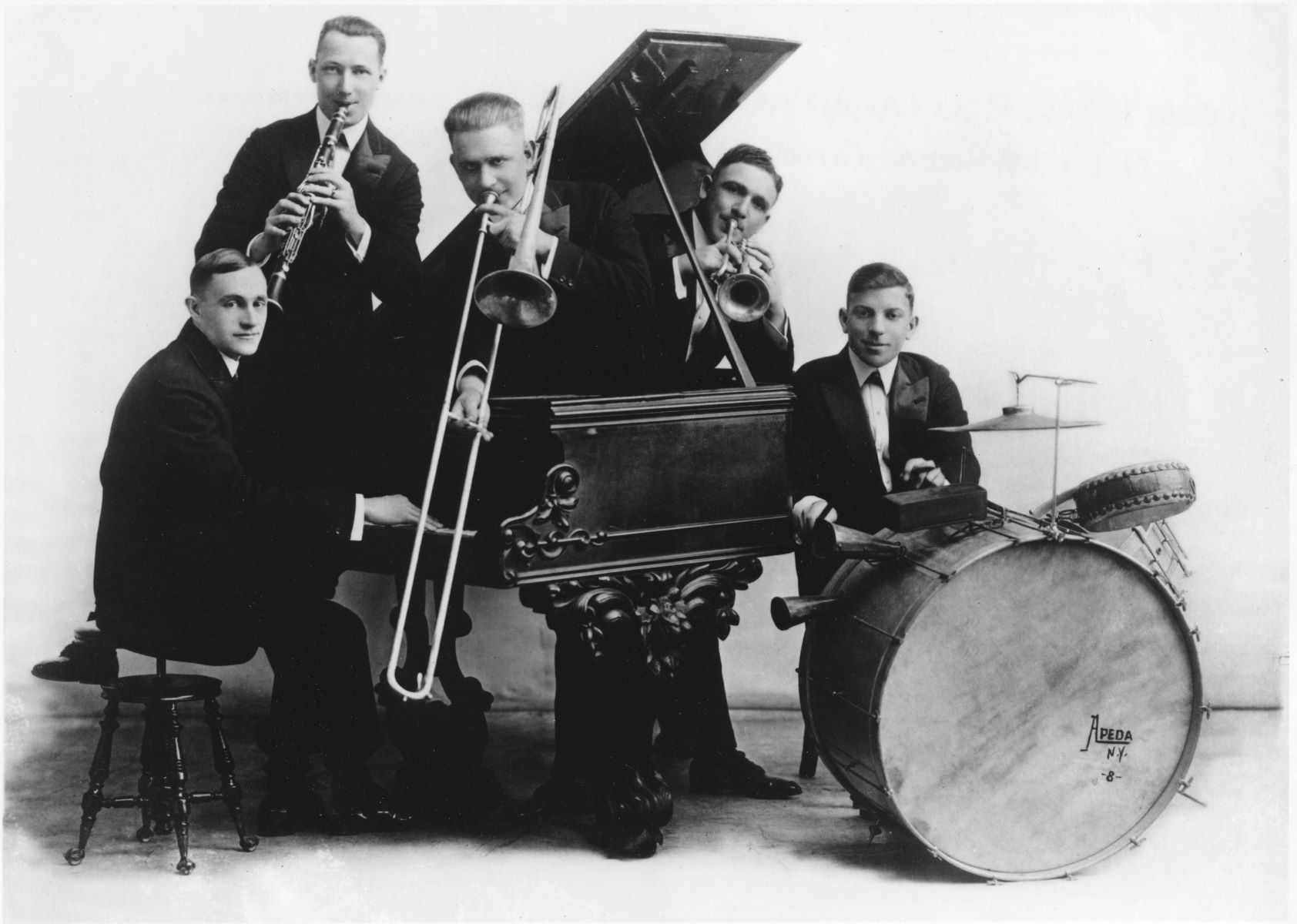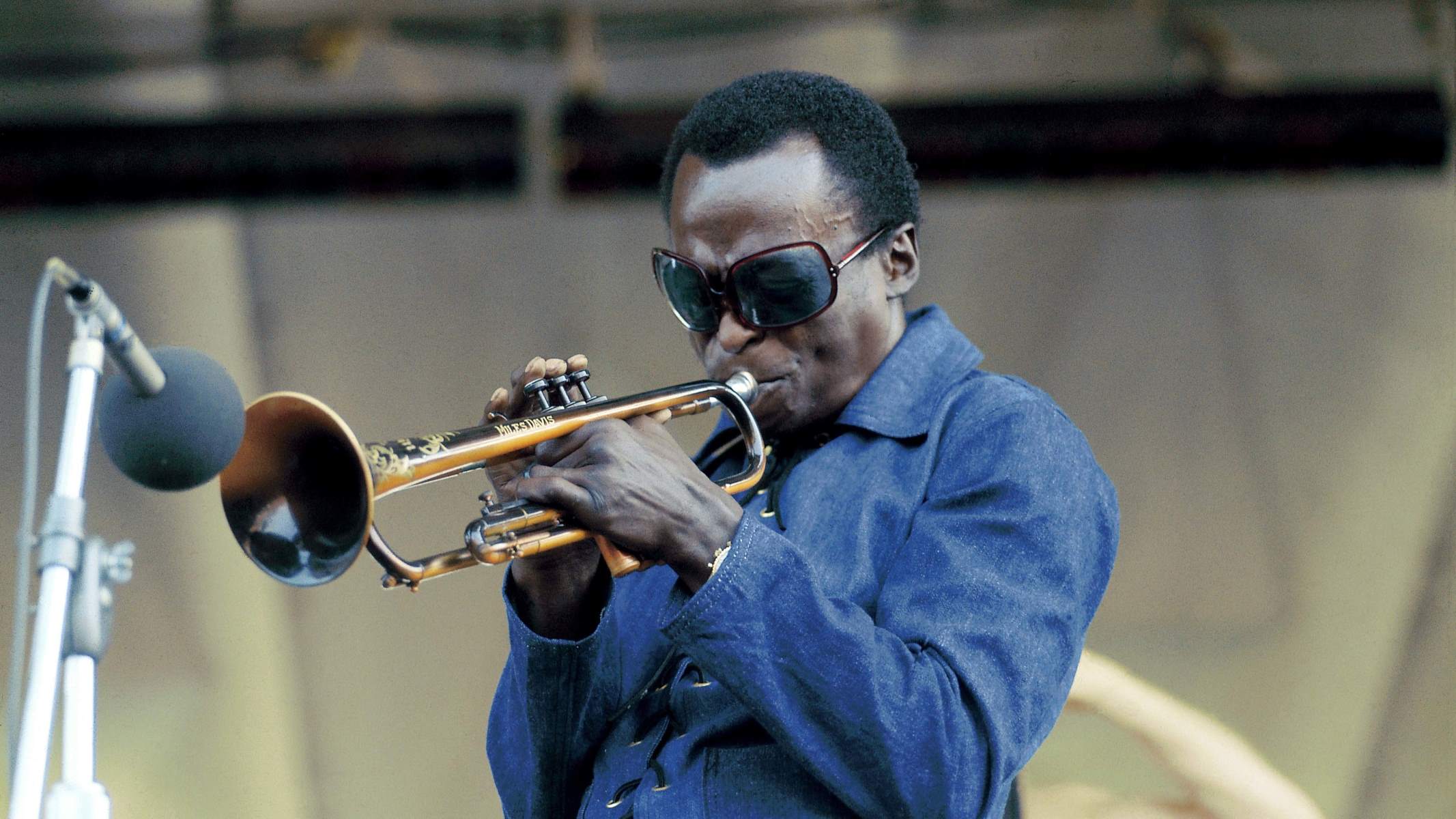Home>Genres>Jazz>What Effect Did The Great Migration Have On The Popularity Of Jazz?


Jazz
What Effect Did The Great Migration Have On The Popularity Of Jazz?
Modified: February 24, 2024
Discover the impact of the Great Migration on Jazz's popularity. Explore how this historic movement influenced the evolution of the vibrant Jazz genre.
(Many of the links in this article redirect to a specific reviewed product. Your purchase of these products through affiliate links helps to generate commission for AudioLover.com, at no extra cost. Learn more)
Table of Contents
- Introduction
- Definition of the Great Migration
- Historical Background of Jazz
- The Impact of the Great Migration on Jazz
- Jazz and the Harlem Renaissance
- Spread of Jazz during the Great Migration
- New Jazz Centers and Influential Musicians
- Jazz and Cultural Exchange during the Great Migration
- Legacy and Lasting Influence of the Great Migration on Jazz
- Conclusion
Introduction
Jazz, often referred to as America’s classical music, has a rich and vibrant history that is deeply rooted in African American culture. It is a genre known for its improvisation, syncopation, and swinging rhythms, and has captivated audiences around the world for over a century. However, the popularity and development of jazz would not have been possible without a significant event in American history known as the Great Migration.
The Great Migration was a period in the early 20th century when millions of African Americans moved from the rural southern states to the urban centers of the North, Midwest, and West. This mass movement was driven by various factors, including economic opportunities, escape from racial discrimination, and the search for a better life.
During this time, jazz was still in its nascent stages, beginning to emerge from ragtime and blues. The migration itself had a profound impact on the development and popularity of jazz, as it brought together diverse musical influences and provided a fertile ground for experimentation and innovation.
The Great Migration not only brought about a demographic shift but also facilitated the exchange of ideas, cultures, and musical styles. As African Americans migrated to cities like Chicago, New York, and Detroit, they found opportunities to express themselves through music, including jazz. This cultural exchange and infusion of new sounds created a platform for jazz musicians to thrive and for the genre itself to evolve.
In this article, we will explore the effect of the Great Migration on the popularity and development of jazz. We will examine the historical background of jazz, delve into the impact of the Great Migration on the genre, explore the relationship between jazz and the Harlem Renaissance, and highlight some of the key jazz musicians and new jazz centers that emerged during this period. Lastly, we will reflect on the lasting influence and legacy of the Great Migration on the jazz genre.
Definition of the Great Migration
The Great Migration refers to the massive movement of African Americans from the rural southern states to urban centers in the North, Midwest, and West in the early 20th century. This movement took place from approximately 1916 to 1970, with the largest influx occurring between 1916 and 1930.
The Great Migration was driven by a combination of push and pull factors. The push factors included racial discrimination, economic hardships, and limited opportunities in the South. African Americans faced systemic oppression, including Jim Crow laws, segregation, and the threat of violence. These conditions, coupled with the promise of job opportunities and a chance at a better life, motivated many to leave the South.
The pull factors, on the other hand, were the opportunities for economic advancement, better living conditions, and the promise of greater freedom and equality in the North and other urban areas. Industrial cities such as Chicago, New York City, Detroit, and Cleveland became major destinations for African Americans.
The Great Migration had a profound impact on both the African American communities that migrated and the regions they moved to. In the North, African Americans faced challenges such as overcrowded neighborhoods, low wages, and continued systemic racism. However, they also found new opportunities for social and economic advancement, access to better educational institutions, and the chance to participate in political and cultural movements.
Overall, the Great Migration was a transformative event in American history that reshaped the social, cultural, and political landscape of the United States. By providing African Americans with new opportunities and exposing them to different cultures and ideas, it played a pivotal role in the development of jazz and other art forms, as well as the broader civil rights movement.
Historical Background of Jazz
To understand the impact of the Great Migration on the popularity of jazz, it is crucial to delve into the historical background of the genre. Jazz originated in the late 19th and early 20th centuries, primarily in African American communities in the Southern United States, particularly New Orleans.
Jazz is a musical genre that combines elements of African, European, and Afro-Caribbean traditions. Its roots can be traced back to African rhythms and musical practices brought over by enslaved Africans, as well as the European musical traditions brought by colonizers.
In the late 19th century, a style of music called ragtime emerged, blending African syncopation with European classical music. Ragtime was characterized by its lively, syncopated rhythms and intricate melodies played on the piano. It laid the foundation for what would eventually evolve into jazz.
Another important influence on the development of jazz was the blues, a genre rooted in African American experiences and emotions. The blues was characterized by its soulful vocal expression and distinctive 12-bar chord progression. It provided a platform for personal storytelling and became a significant part of the jazz repertoire.
As jazz began to take shape, it incorporated improvisation, a key element that sets it apart from other genres. Jazz musicians embraced the freedom to create and innovate on the spot, often engaging in musical conversations or “jam sessions” with other musicians.
In its early years, jazz was primarily associated with African American communities in New Orleans, where it could be heard in dance halls, brothels, and other social gatherings. Influential musicians such as Buddy Bolden, Freddie Keppard, and Jelly Roll Morton emerged from this vibrant musical scene.
With the advent of recording technology in the early 20th century, jazz started to gain wider recognition and popularity. Popular recording artists such as Louis Armstrong, Duke Ellington, and Bessie Smith brought jazz to a broader audience, bridging racial and cultural divides. Jazz began to spread beyond New Orleans and establish itself as a distinctly American art form.
It is against this backdrop of jazz’s early development and growing popularity that the Great Migration occurred. The migration of African Americans from the South to urban centers would play a decisive role in the subsequent evolution and diffusion of jazz.
The Impact of the Great Migration on Jazz
The Great Migration had a profound impact on the development and popularity of jazz. As African Americans moved from the rural South to urban centers in the North, Midwest, and West, they brought their rich musical traditions and cultural experiences with them. This migration created a fertile ground for the growth, evolution, and diffusion of jazz.
One of the key ways the Great Migration influenced jazz was through the exchange of musical ideas and styles. In the urban centers where African Americans settled, they encountered different cultures, music genres, and musical traditions. This exposure to new sounds and influences allowed jazz musicians to incorporate a broader range of musical elements into their compositions and performances.
Moreover, the migration provided jazz musicians with greater opportunities for exposure and recognition. In the urban centers, venues such as nightclubs, speakeasies, and dance halls proliferated. African American musicians found more outlets to showcase their talent and reach larger audiences.
The Great Migration also facilitated collaboration and networking among jazz musicians. As they migrated to cities like Chicago, New York, and Detroit, they found themselves living in close proximity and interacting with other talented musicians. This led to the formation of jazz bands, ensembles, and orchestras, which fostered innovation, experimentation, and the development of distinct regional jazz styles.
Additionally, the Great Migration played a role in breaking down racial barriers in the music industry. African American musicians had the opportunity to perform for racially diverse audiences, and their talents began to attract attention and garner appreciation from people of all backgrounds. This helped to challenge prevailing stereotypes and perceptions about the abilities and contributions of African American musicians.
Furthermore, the cultural experiences and struggles associated with the Great Migration provided rich material for jazz musicians to draw upon. Jazz became a means of expression, reflecting the joys and challenges of African American life during this period. The music served as a powerful tool for storytelling and social commentary, giving voice to the experiences of African Americans and providing a medium for cultural and social critique.
In essence, the Great Migration acted as a catalyst for the expansion and popularization of jazz. It facilitated the exchange of musical ideas, created opportunities for recognition and collaboration, and allowed for the exploration of new themes and musical styles. Without the Great Migration, the development of jazz as we know it would not have been possible.
Jazz and the Harlem Renaissance
The Harlem Renaissance was a cultural and artistic movement that took place in the 1920s and 1930s in the Harlem neighborhood of New York City. It was a period of intense creativity and cultural exploration for African Americans, and jazz played a central role in this vibrant cultural renaissance.
During the Harlem Renaissance, African American artists, writers, musicians, and intellectuals flocked to Harlem, seeking artistic freedom, racial pride, and a platform to express their creativity. Jazz, with its improvisational nature, syncopated rhythms, and emotional depth, emerged as the soundtrack of the Harlem Renaissance, capturing the spirit and energy of the era.
Harlem became a hotbed for jazz musicians, clubs, and speakeasies, where the sounds of jazz reverberated through the streets. Legendary venues like the Cotton Club and the Savoy Ballroom attracted both African American and white audiences, further breaking down barriers and fostering cultural exchange.
One of the iconic figures of the Harlem Renaissance was Duke Ellington, a prolific composer, and bandleader. Ellington’s orchestra, known for its rich sound, sophisticated arrangements, and innovative compositions, became synonymous with the Harlem Renaissance. His compositions, such as “Take the ‘A’ Train” and “Mood Indigo,” captured the essence of the era and solidified his place in jazz history.
Another influential figure of the Harlem Renaissance was Louis Armstrong. Known for his exceptional trumpet playing and distinctive gravelly voice, Armstrong’s talent and charisma propelled him to international stardom. Armstrong’s recordings during this period, such as “West End Blues,” showcased his virtuosity and demonstrated the breadth of expression that jazz could achieve.
Jazz not only served as entertainment during the Harlem Renaissance but also as a means of social and political commentary. The music expressed the struggles, aspirations, and resilience of African Americans during a time of racial inequality and discrimination. It provided a voice for marginalized communities, calling for equality and justice.
The Harlem Renaissance was a critical juncture in the history of jazz. It brought the genre to the forefront of American culture and provided a platform for African American musicians to attain recognition and acclaim. The artistic and intellectual energy of the renaissance inspired jazz musicians to push the boundaries of their craft, experimenting with new styles and techniques.
Jazz and the Harlem Renaissance were symbiotically linked, with each influencing and shaping the other. The energy of the renaissance infused jazz with a sense of cultural pride, creativity, and determination, as musicians embraced their role as cultural ambassadors and pioneers. The impact of the Harlem Renaissance extended far beyond the 1920s and 1930s, leaving a lasting impact on the trajectory and evolution of jazz.
Spread of Jazz during the Great Migration
The Great Migration provided the perfect conditions for the spread of jazz beyond its birthplace in New Orleans. As African Americans migrated from the South to urban centers in the North, Midwest, and West, they took their love for jazz along with them, helping the genre gain popularity and influence in new regions.
The migration allowed jazz to reach new audiences, who were eager to embrace the vibrant and energetic sounds of the genre. In cities like Chicago, New York City, and Detroit, African American communities flourished, creating a demand for social entertainment venues where jazz could be performed and enjoyed.
Jazz clubs, dance halls, and speakeasies became the gathering places for African Americans and people from all walks of life, creating a melting pot of musical styles and cultural exchange. These venues featured live jazz performances by talented musicians, providing listeners with an immersive and unforgettable experience.
As jazz gained popularity in the urban centers, it also began to permeate popular culture through various media. Recordings and sheet music made jazz accessible to a wider audience, spreading its influence even further. African American jazz musicians, such as Louis Armstrong and Duke Ellington, achieved national and international recognition through their recorded music, bringing the sounds of jazz to people all over the world.
The migration also allowed for the exchange and cross-pollination of musical ideas that shaped the evolution of jazz. Musicians from different regions and with diverse musical backgrounds came together, sparking collaborations and innovation. For example, the migration of jazz musicians from New Orleans to Chicago contributed to the development of Chicago-style jazz, characterized by its larger ensembles and more prominent use of improvisation.
Additionally, the Great Migration provided jazz musicians with opportunities to perform and connect with other artists in different regions. This led to the formation of influential bands and orchestras that helped propel the genre forward. Notable bands like the Fletcher Henderson Orchestra in New York City and the King Oliver Creole Jazz Band in Chicago represented the vibrant musical scenes that emerged during the Great Migration.
Overall, the Great Migration played a significant role in spreading and popularizing jazz across the United States. Through the migration, jazz became a cultural force that transcended regional boundaries and reached diverse audiences. This expansion and diffusion of the genre not only enriched the cultural fabric of America but also influenced other musical genres and set the stage for jazz to become a global phenomenon.
New Jazz Centers and Influential Musicians
As African Americans migrated to urban centers during the Great Migration, new jazz centers emerged, becoming vibrant hubs for the genre. These cities and the musicians who called them home played a crucial role in the development and dissemination of jazz during this period.
Chicago, known as the “Mecca of Jazz,” became a thriving center for jazz during the Great Migration. The city’s vibrant music scene attracted talented musicians from various regions, resulting in a fusion of styles and a strong sense of musical experimentation. The Chicago jazz scene was characterized by its energetic improvisation, syncopated rhythms, and influences from the blues. Influential musicians like Louis Armstrong, Earl Hines, and King Oliver helped define the sound of Chicago-style jazz.
New York City also played a pivotal role in the evolution of jazz during the Great Migration. The city became a melting pot of cultures, attracting musicians from all over the country and the world. Harlem, in particular, became a hotbed of jazz activity during the Harlem Renaissance. The neighborhood’s vibrant nightlife, legendary jazz clubs, and cultural movements brought forth iconic musicians like Duke Ellington, Fletcher Henderson, and Billie Holiday. Their contributions to jazz not only shaped the sound of the genre but also influenced the broader cultural and artistic movements of the era.
In Detroit, the rise of the automobile industry during the Great Migration brought a wave of economic prosperity and cultural transformation. The city became a thriving cultural center where jazz flourished. Musicians such as Tommy Flanagan, Yusef Lateef, and Barry Harris emerged from Detroit, leaving an indelible mark on the genre. Detroit’s jazz scene was known for its blend of bebop, swing, and soulful expressions.
Other cities like Kansas City, St. Louis, and Los Angeles also experienced a jazz renaissance during the Great Migration. In Kansas City, a distinctive style of jazz known as Kansas City jazz or “KC jazz” emerged. This style featured a bluesy and riff-based approach, with influential musicians like Count Basie and Charlie Parker honing their skills in the city’s vibrant clubs and jam sessions. St. Louis was home to influential musicians like Scott Joplin, whom many consider the “King of Ragtime,” and Los Angeles saw the rise of West Coast jazz, blending influences from swing, bebop, and cool jazz.
These new jazz centers became incubators of talent, where musicians pushed the boundaries of the genre, experimented with different styles, and collaborated with one another. Their contributions not only shaped the sound of jazz during the Great Migration but also laid the foundation for the future of the genre.
The influential musicians who emerged during this period became the torchbearers of jazz, helping it gain recognition and popularity beyond its African American origins. Their innovative compositions, virtuosic playing, and charismatic performances captivated audiences and established jazz as a truly distinct and enduring art form.
Overall, the emergence of new jazz centers and the influential musicians who flourished within them were instrumental in the continued growth and evolution of jazz during the Great Migration. Their impact reverberated beyond their respective cities, contributing to the lasting legacy of jazz as a uniquely American musical tradition.
Jazz and Cultural Exchange during the Great Migration
The Great Migration not only resulted in the geographic movement of African Americans but also facilitated a significant cultural exchange. Jazz, as an art form deeply rooted in African American culture, played a central role in this exchange, influencing and being influenced by various musical traditions and cultural practices.
As African Americans moved from the rural South to urban centers in the North, Midwest, and West, they encountered diverse communities and cultural influences. In these new environments, jazz musicians found themselves exposed to different musical genres, such as classical music, European folk music, Latin rhythms, and Eastern influences. This exposure sparked a fusion of styles and sounds, leading to the development of new jazz subgenres and innovative musical approaches.
Conversely, jazz musicians also left an indelible impact on the cultures they encountered during the Great Migration. The infectious rhythms, improvisation, and soulful melodies of jazz captured the attention and imagination of people from all walks of life. African American musicians, such as Louis Armstrong and Duke Ellington, became cultural ambassadors, spreading the joy and artistry of jazz throughout the country and beyond.
Jazz music became a vehicle for cultural exchange, bridging racial, social, and cultural divides. It provided a common language through which people of different backgrounds and experiences could connect and find common ground. The shared experience of listening to and experiencing jazz performances fostered a sense of unity, breaking down barriers and fostering understanding.
Moreover, the Great Migration allowed for the convergence of different artistic disciplines. The cultural renaissance that occurred during this period, particularly in cities like Harlem, brought together not only jazz musicians but also writers, visual artists, and dancers. This interdisciplinary collaboration resulted in the blending of artistic forms, as jazz musicians performed alongside poets, painters, and dancers, creating dynamic and innovative performances that blurred the boundaries between art forms.
This cultural exchange also extended beyond the confines of the United States. African American jazz musicians toured internationally, introducing jazz to audiences around the world. Their performances not only showcased their virtuosity but also highlighted the rich cultural heritage from which jazz originated. As a result, jazz became a global phenomenon, influencing music and cultural movements in countries as far as Europe, Asia, and Africa.
Through this cultural exchange, jazz became a powerful symbol of resilience, creativity, and the spirit of cultural collaboration. It brought people together, transcending societal divisions and leaving an indelible mark on music, art, and society as a whole. The Great Migration served as a catalyst for this exchange, allowing jazz to evolve, embrace different influences, and continue to captivate audiences worldwide.
Legacy and Lasting Influence of the Great Migration on Jazz
The Great Migration left a profound and lasting impact on the development and legacy of jazz. The migration of African Americans from the rural South to urban centers during the early 20th century played a pivotal role in transforming jazz from a regional music form to a national and international phenomenon.
One of the key legacies of the Great Migration is the spread and popularization of jazz across the United States. The migration allowed for the expansion of jazz beyond its birthplace in New Orleans, bringing the genre to new audiences and allowing it to evolve and incorporate diverse musical influences. This diffusion of jazz during the Great Migration solidified its status as a distinctly American art form and paved the way for its global influence.
The Great Migration also contributed to the development of regional jazz styles. As African Americans settled in cities like Chicago, New York City, and Detroit, distinct regional jazz scenes emerged. These scenes were characterized by different approaches, influences, and musical styles, reflecting the unique cultural and social landscape of each city. This regional diversity added depth and richness to the jazz genre, contributing to its enduring appeal.
Furthermore, the migration brought together talented musicians from different regions and backgrounds, fostering collaboration and innovation. Musician networks were formed, leading to the creation of influential jazz bands and orchestras. These collaborations helped shape the sound of jazz, pushing boundaries and exploring new musical territories.
The Great Migration also fueled the social and political consciousness of jazz musicians. The experiences of African Americans during the migration, coupled with the broader struggles for civil rights and equality, found an expressive outlet in jazz music. Through their compositions and performances, jazz musicians conveyed the joys, sorrows, and aspirations of their communities, becoming cultural advocates for social change. Jazz became a powerful tool for self-expression, cultural pride, and as a means to challenge prevailing social injustices.
Furthermore, the Great Migration provided a platform for African American musicians to gain recognition and break down racial barriers in the music industry. Jazz musicians like Louis Armstrong, Duke Ellington, and Ella Fitzgerald achieved unprecedented success during this period, garnering acclaim and respect for their contributions to the genre. Their influence and success paved the way for future generations of jazz musicians, inspiring and opening doors for artists of all backgrounds.
Today, the legacy of the Great Migration on jazz can be seen in the continued popularity and relevance of the genre. Jazz remains a dynamic and evolving art form, incorporating influences from various musical traditions and cultural experiences. The themes of resilience, cultural exchange, and societal commentary that emerged from the Great Migration continue to resonate in jazz music, making it an enduring expression of the human experience.
The Great Migration not only shaped the trajectory of jazz but also left an indelible mark on American history. It stands as a testament to the power of migration, cultural exchange, and artistic expression, reminding us of the transformative impact that music can have on society.
Conclusion
The Great Migration had a profound and lasting impact on the popularity, development, and legacy of jazz. As African Americans migrated from the rural South to urban centers during the early 20th century, they brought their rich musical traditions and cultural experiences with them, fueling the growth, evolution, and diffusion of jazz.
Through the Great Migration, jazz expanded beyond its birthplace in New Orleans, spreading to cities like Chicago, New York City, and Detroit. New jazz centers emerged, becoming vibrant hubs for the genre and serving as incubators for innovation and collaboration. Influential musicians found opportunities for recognition, performing for diverse audiences and breaking down racial barriers in the music industry.
The Great Migration also facilitated cultural exchange, as jazz musicians encountered new musical influences, genres, and artistic movements. This exchange resulted in the fusion of musical styles, the creation of regional jazz scenes, and the blending of art forms. Jazz became a vehicle for social and political commentary, reflecting the experiences and aspirations of African Americans during a time of racial inequality and discrimination.
The legacy of the Great Migration on jazz can be seen in the continued popularity and relevance of the genre today. Jazz remains a dynamic and evolving art form, incorporating influences from various musical traditions and cultural experiences. Its themes of resilience, cultural exchange, and societal commentary continue to resonate, making jazz a powerful expression of the human experience.
In conclusion, the Great Migration acted as a catalyst for the popularity and development of jazz. It provided the conditions for cultural exchange, collaboration, and innovation, allowing jazz to become a national and international phenomenon. The migration shaped the trajectory of jazz, influencing its sound, style, and social impact. The lasting influence and legacy of the Great Migration on jazz serve as a testament to the transformative power of music and its ability to bridge divides, celebrate diversity, and inspire change.




